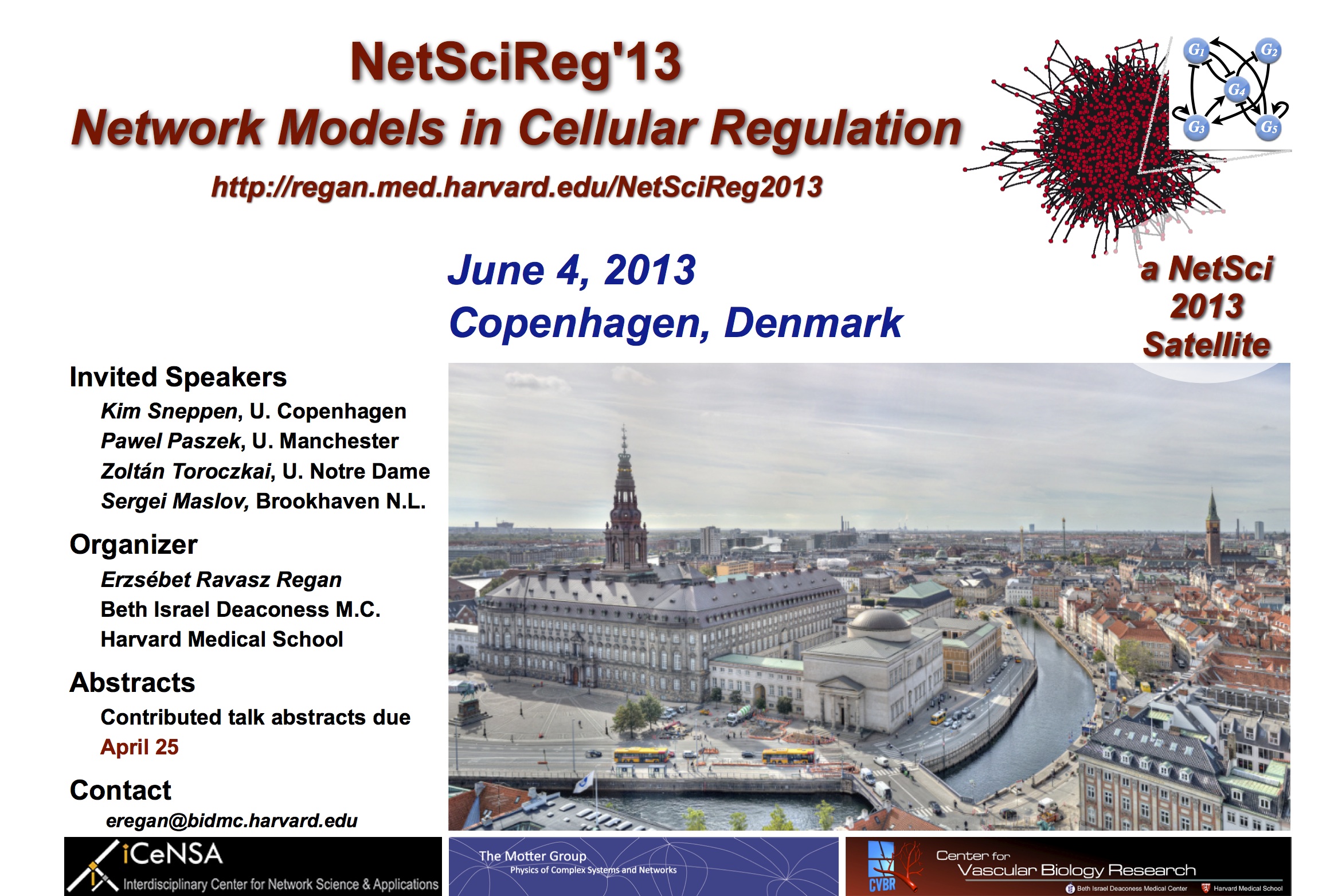NetSciReg'13 - Network Models in Cellular Regulation
June 4, 2013 - Copenhagen
| Synopsis |
| Program |
| NetSciReg'13 Flyer |
| Important Dates |
| Registration |
| Call for Contributed Talks |
| Logistics |
| NetSci 2013 |
| Sponsors |
|
Time: 3:15 - 4:05 PM
Type: Invited presentation
Affiliation: Brookhaven National Laboratory, USA
Abstract
It has been reported [1] that in prokaryotic genomes the number of transcriptional
regulators is proportional to the square of the total number of genes. As a consequence
of this trend their fraction among all genes (the so-called "regulatory overhead" of a genome)
is less than 0.5% in small (< 500 genes) genomes, while in large genomes (~10,000 genes)
it can be as high as 10%. The situation is reminiscent of the humorous Parkinson's
Law describing the rate at which government bureaucracies disproportionately expand
over time. We recently proposed [2] a general explanation of the quadratic scaling
of regulators in bacterial genomes and illustrated it using a simple model in which
metabolic and regulatory networks co-evolve together. In our model organisms acquire
new metabolic functions by the virtue of horizontal gene transfer of entire
co-regulated metabolic pathways from a shared gene pool (the "universal metabolic network").
Adapting to a new environmental condition (e.g. learning to use a new nutrient source)
involves acquiring new enzymes as well as reusing some of the enzymes that are already
encoded in the genome. As organism's genome grows larger it is more likely have
some of the genes necessary to master a new functional task and thus needs to
acquire fewer new genes from the environment. From this argument it follows that
the number of functional tasks equal to the number of their transcriptional
regulators should always scale faster than linearly with the total number of
genes in the genome. The empirically observed quadratic scaling between these
two numbers was mathematically derived for a broad range of universal network
topologies [3] as well as reconciled [4] with the scaling law describing families
of homologous proteins. Evolutionary conserved pathways in our model have a
long-tailed power-law distribution of sizes that agrees well with real-life data.
This offers a conceptual explanation for the empirically observed broad distribution
of regulon sizes defined by out-degrees of transcription factors in regulatory networks.
|
SPONSORS: |



